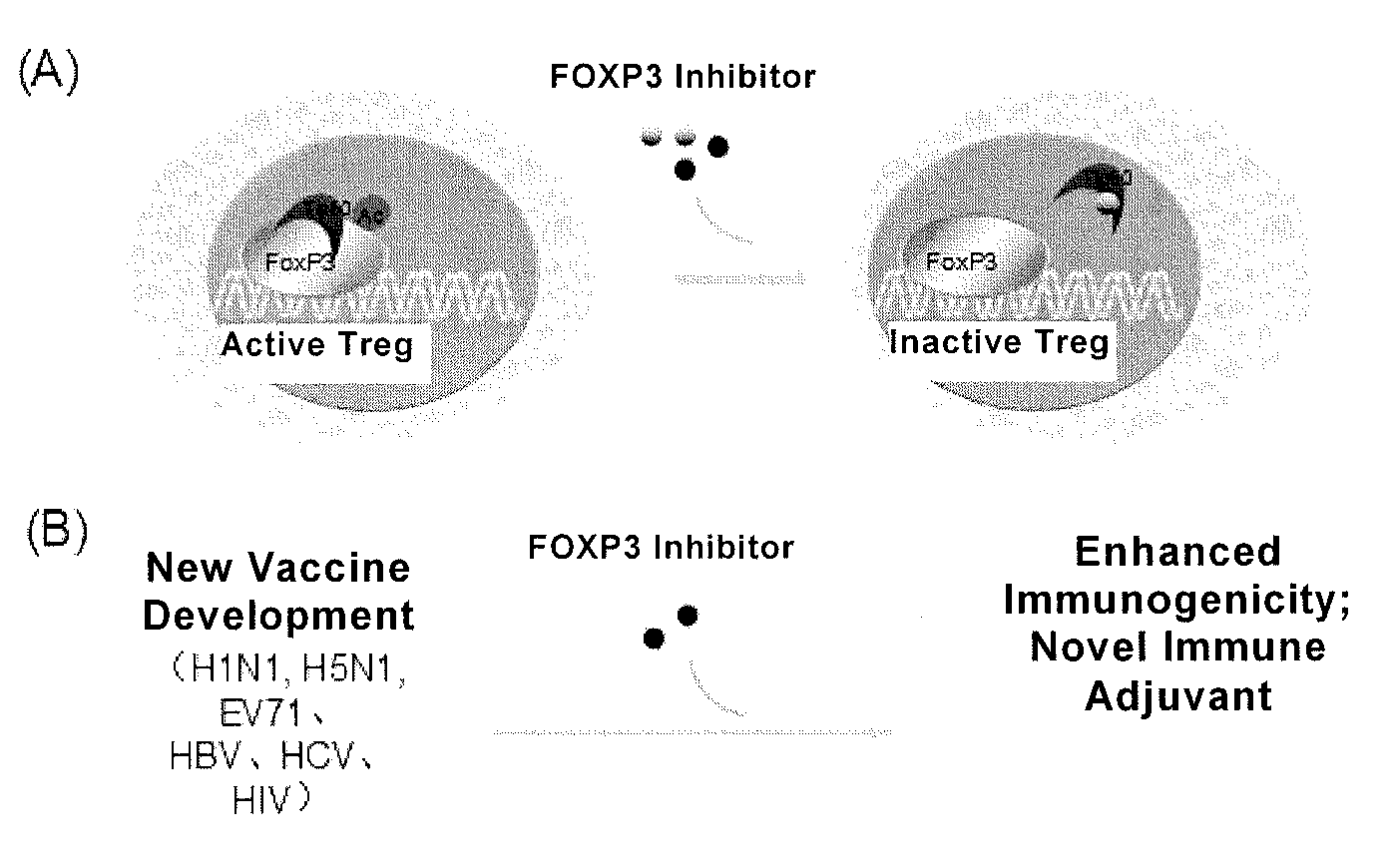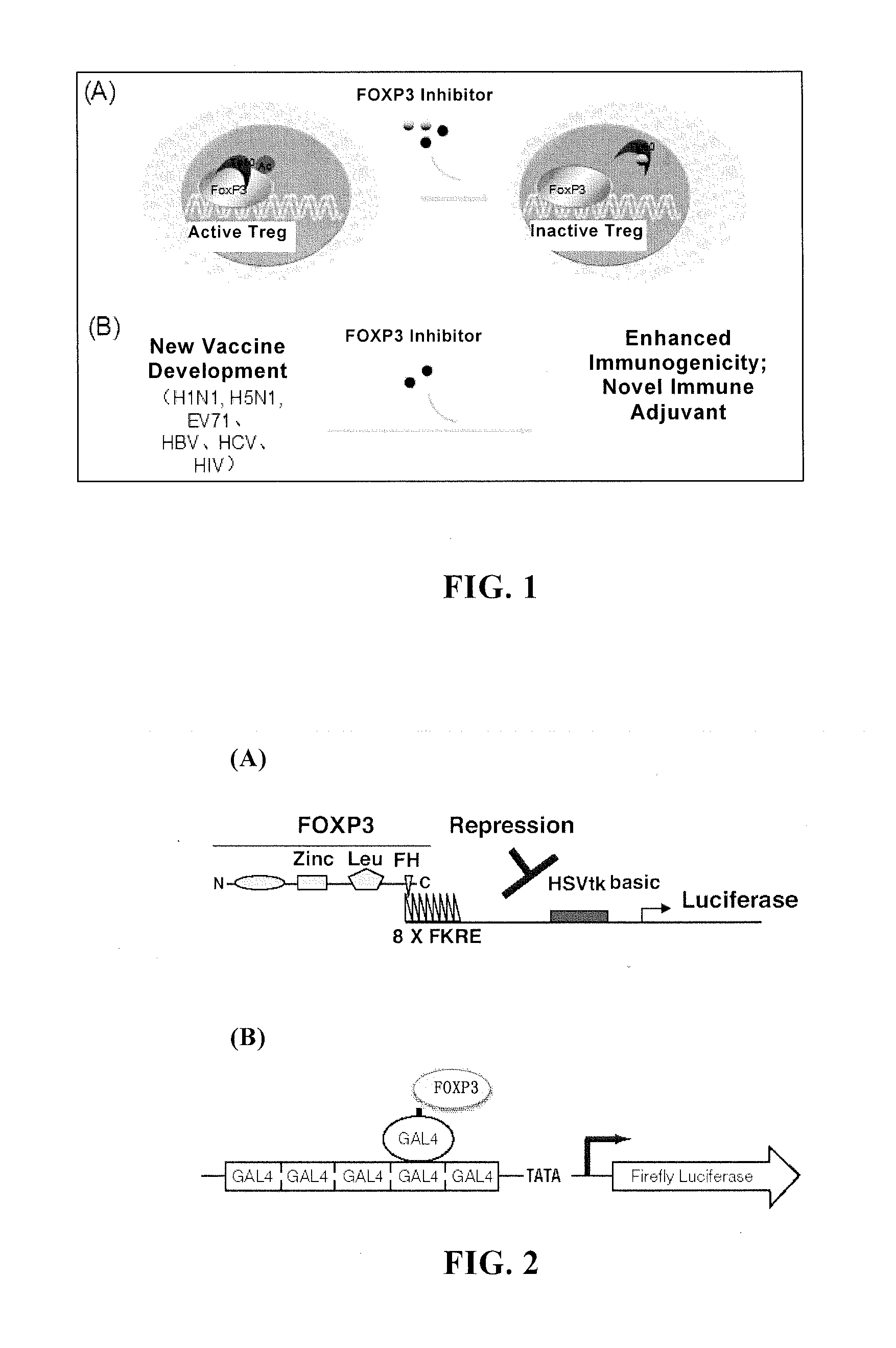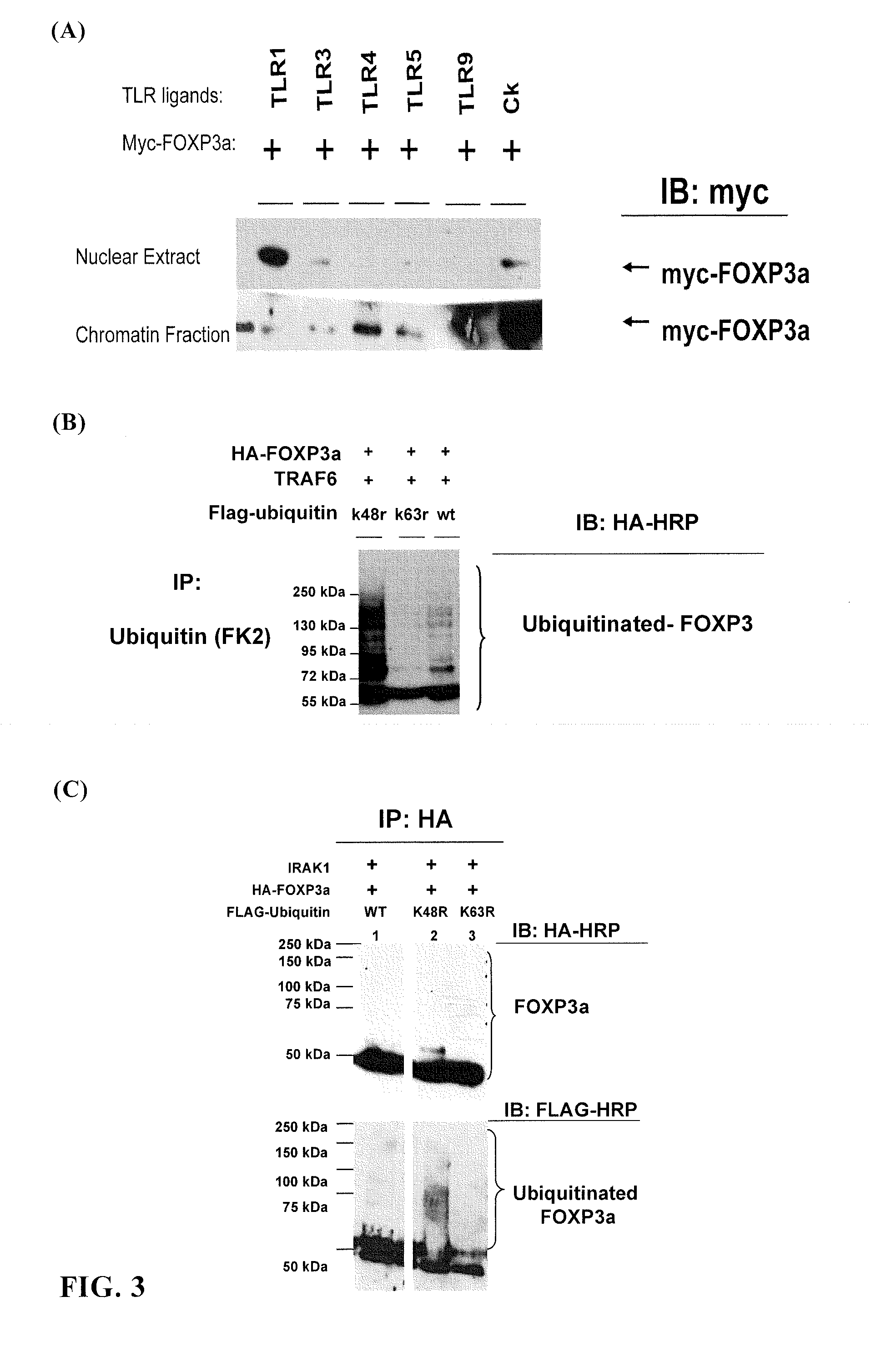Regulatory factor of foxp3 and regulatory t cells and use thereof
a technology of regulatory t cells and regulatory factors, applied in the field of molecular biology and biomedicine, to achieve the effect of enhancing vaccine immunogenicity
- Summary
- Abstract
- Description
- Claims
- Application Information
AI Technical Summary
Benefits of technology
Problems solved by technology
Method used
Image
Examples
example 1
Effect of TLR Signaling on FOXP3
[0144]Test 1. Effect of TLR signaling on expression levels of FOXP3 Jurkat T cells were transfected with FOXP3 expression plasmid Myc-FOXP3a, 48 hours later, stimulated by adding different TLR ligands (operated according to the procedure of Apotech kit). After cell samples were collected, nuclei and chromatin factions were isolated. Detection was performed, respectively, by protein electrophoresis and immunoblotting.
[0145]The experimental results as shown in FIG. 3a. The results show that the FOXP3 protein expression changes with different TLR signaling stimulations. FOXP3 protein levels were significantly reduced by the effect of TLR signaling (especially, TLR3 and TLR9).
[0146]These results show that: TLR signaling (such as, TLR3 and TLR9) can serve as negative regulatory signaling of FOXP3.
[0147]Test 2. Effect of TLR signaling downstream activator protein TRAF6 on FOXP3 ubiquitination
[0148]293T cells were co-transfected with TLR signaling downstream...
example 2
FOXP3 Binding to STUB1 and Other E3
[0155]293T cells were co-transfected with HA-FOXP3a and Myc-STUB1, and co-immunoprecipitated, respectively, using anti-HA and anti-Myc antibodies, and detection by immunoblotting (results shown in FIG. 4(A), left panel). In reversed experiments, 293T cells were co-transfected with Flag-FOXP3 and Myc-STUB1, co-immunoprecipitated, respectively, using anti-Flag and anti-Myc antibodies, and detection by immunoblotting (results shown in FIG. 4(A), right panel).
[0156]Other immune signaling pathways can be detected by co-transfecting 293T cells with E3 and Flag-FOXP3a, HA-Ubi. Cell lysate was immunoprecipitated with anti-Flag antibody, and detection with anti-Myc antibody (results as shown in FIG. 4(B)).
[0157]The results show: FOXP3 can be co-immunoprecipitated with STUB1, and STUB 1 can also specifically pull down FOXP3, suggesting that the interaction between STUB 1 and FOXP3 is specific and not dependent on the expression of exogenous labels. In additi...
example 3
STUB1 Can Induce FOXP3 Ubiquitination
[0159]293T cells were co-transfected with Myc-STUB1, HA-Ub, and Flag-FOXP3a or Flag-FOXP1. Cell lysate was immunoprecipitated with anti-HA antibody, and detection of ubiquitinated protein by immunoblotting (results as shown in FIG. 5 (A)). Jurkat T cells were co-transfected with Myc-STUB1, HA-Ub, and Flag-FOXP3a. Cell lysate was immunoprecipitated with anti-HA antibody, and detection by immunoblotting (results as shown in FIG. 5(B)).
[0160]The results show: ubiquitin ligase STUB1 can specifically act on FOXP3, and induce ubiquitination of FOXP3 protein.
[0161]The results show: ubiquitination is one of post-translational modifications of FOXP3 and FOXP3 is a specific substrate of STUB 1 ubiquitin ligase.
PUM
| Property | Measurement | Unit |
|---|---|---|
| temperature | aaaaa | aaaaa |
| pH | aaaaa | aaaaa |
| pH | aaaaa | aaaaa |
Abstract
Description
Claims
Application Information
 Login to View More
Login to View More - R&D
- Intellectual Property
- Life Sciences
- Materials
- Tech Scout
- Unparalleled Data Quality
- Higher Quality Content
- 60% Fewer Hallucinations
Browse by: Latest US Patents, China's latest patents, Technical Efficacy Thesaurus, Application Domain, Technology Topic, Popular Technical Reports.
© 2025 PatSnap. All rights reserved.Legal|Privacy policy|Modern Slavery Act Transparency Statement|Sitemap|About US| Contact US: help@patsnap.com



